|
This massive character, almost six inches long, was seen crossing the trail this morning on the north side of the Firestone Center for Restoration Ecology. It is a Spirobolid millipede in the family Spirostreptidae, but I have been unable to get a species on it. I'll keep trying, but for now here is a really spectacular animal.
0 Comments
This bat was seen eating a fig while walking in heavy rain at night. Not so easy to get a sure ID on it so I am going to research things before naming it. But pretty cool to see it holding the fruit and all..
On our night walk in the pouring rain, we found that some bats were just roosting in the low vegetation waiting out the rain. This bat is the striped yellow-eared bat and has, as expected, some yellowish coloring on the ears and a mid-dorsal white stripe that is just visible in this photo.
Among the frogs and toads at the Firestone Center, two animals stand out as the biggest and baddest, so... Tonight it was just pouring rain so we decided, ridiculous as it may seem to sane people, to go out for a walk along the Rio Cacao and even up into the off-trail stuff along infeeder creeks looking for glass frogs. Some very interesting thrashing around in steep, slippery conditions yielded no glass frogs, but we saw both of the trophy species of toads and frogs. First up, the Cane Toad (Rhinella marina). This is an invasive species in many parts of the world, but here it is a native species. And they can get big to the point of huge. This one is not a gargantuan specimen, but would weigh in at over a pound. It was sitting near the Fish Pond on an old hollowed out stump. And just look at those massive poison glands behind the eyes and ears! Grab this guy and you will really need to wash your hands before eating your trail mix. And the second big boy is the bullfrog. Sadly I can not be exactly sure of the species, but it is in the Genus Leptodactylus and very likely the species bolivianus, but there are two similar really big frogs here and don't want to mis-identify this one. This frog, like the other photos I am posting or will post from the night walk, was taken in heavy rain, so please forgive the various white circles in the pics as there was water everywhere. For those interested, all photos on this rainy night hike were taken with a waterproof Olympus TG-3 camera.
The tropical bullfrogs are very nice-looking frogs, and amazing (capable of catching and eating things such as bats and snakes). They can get quite large, like 7 inches from nose to butt, and later in the walk we actually saw one pretty darn close to this size and one of the biggest frogs I have ever seen. McFarlane tried to grab it for a photo "in-hand" for some scale to show the sheer size of the thing. And failed. Massive and super strong, plus being slippery as all get out, these are hard animals to catch with a quick grab. And so it goes. We do not keep a collection of things here like a museum, but document what we do find when we are here. Two things of note this year were: Tinamou eggs. These are the size of a "large" almost "extra large" chicken egg, and are a pretty blue. They were found on the property a couple days ago by Don McFarlane when he was in the jungly stuff up above the Program house. From the looks of them they were already found by some predator and eaten, since that does not really look like chicks pecked their way out of them. And then there is this. It is apparently a McFarlane version of a machete, commonly called a "Newbie Wand." A very nice specimen of such a thing.
These wasps, known variously as spider hawks or spider wasps or for some tarantula hawks, are very neat animals. They capture large insects or spiders by stinging and paralyzing them, then place the victim in a hole in the ground, and lay an egg on it. The egg hatches and the larvae gets to eat some fresh food before morphing into an adult wasp and digging itself out of the ground. Here is one dragging what looks like a tree cricket or larval katydid to it's hole near the top of the Firestone Center property. And now your fun fact of the day. The Schmidt Pain Index goes from 0 (bite does not break skin) to 4 (really, really ouchie) and rates quite a number of insect bites as to how painful they are. This wasp rates a 4, as painful as anything pretty much can be. And lastly, a short video from Borneo where I explain these spiders in a little more detail. Much to my surprise, Sleepy the Sloth was back again today, in the same tree as before only higher up. Apparently he had climbed down to go potty, as sloths do, and then right back up and back to sleep. Lots of rain and he is now hanging upside down and quite soggy. Good to see him again!
A lot of people are surprised to find that the range of the white-tailed deer extends all the way to Costa Rica. But in reality it extends well down into South America, as this species is very widespread.
This year at the Firestone Center we are seeing rather a lot of deer, which is not always the case. Walking down the Access road in the late afternoon, it was pretty dark and starting to rain, but I managed to get a half-decent photo of one of the three deer that were out and visible in the area. This species of spider has been the subject of some of the scientific work at the Firestone Center. The golden silk orb weaver is a spider that can get very large, and makes fairly obvious webs in mostly sunny areas. It has a very wide distribution so many people are familiar with them, and we enjoy seeing them here. And this photo is need of some explanation. The large obvious, colorful spider is the female spider. If you look closely just to the right of her abdomen you can actually make out the male spider (way smaller), which is using her web to hang out on. And that which looks like another spider down lower is the female's molt skin, which she just shed hours before I took this photo (I observed her earlier in the day and she had not molted).
The green and black poison dart frog is a very striking animal. In general the coloration is considered to help let predators know not to try and take a bite, as it has poisonous secretions.
But they are famously hard to photograph without a studio and very compliant frog (they are kept as pets so this is possible). I tried to photograph this one to bring out the deep black-hole-like blacks, and see that I burned out the greens. These frogs have a very bright neon green pattern, and here it looks far too white. I might get another chance to try again and see if I can bring out the greens without completely making the blacks look like, well, just deep black and not frog parts. They are not super common at the FCRE, but around mid-morning they can be found in dark, wet corners of the forest floor. |
AuthorKeith Christenson - Wildlife Biologist Categories
All
Author
Keith Christenson Wildlife Biologist Archives
September 2021
|
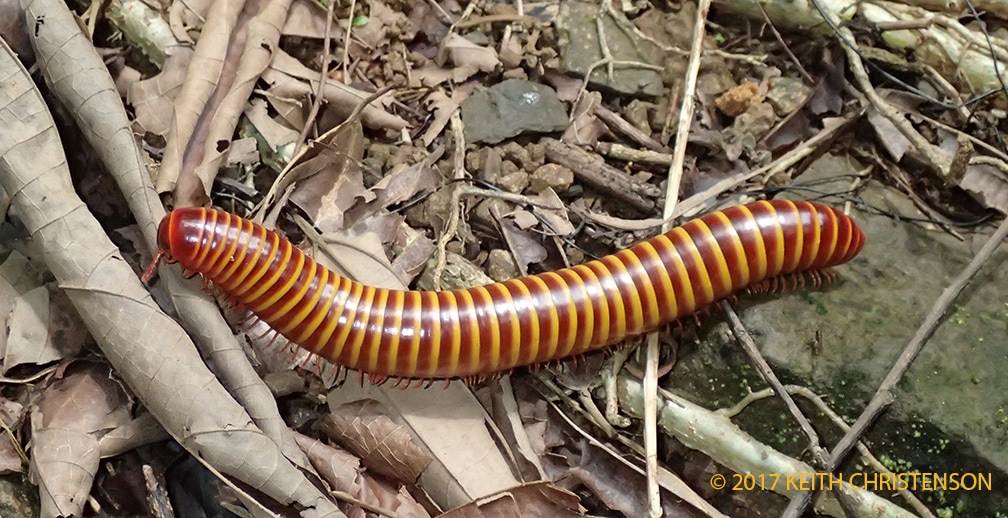
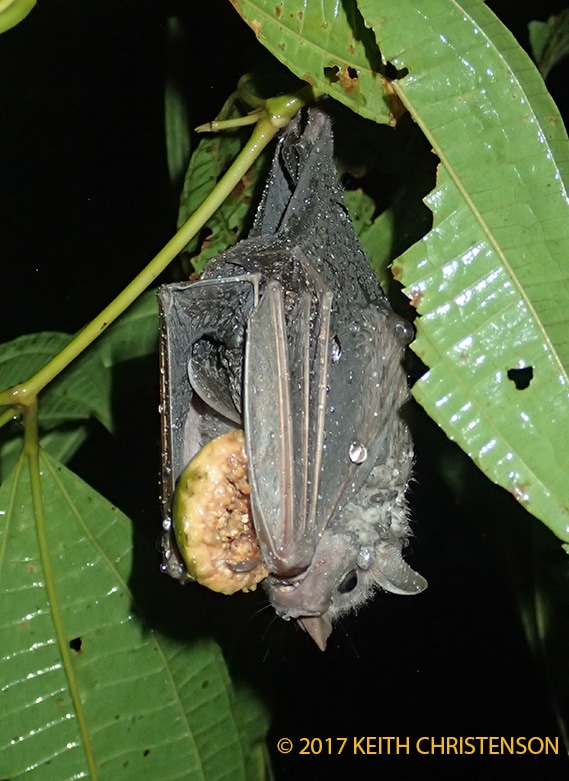

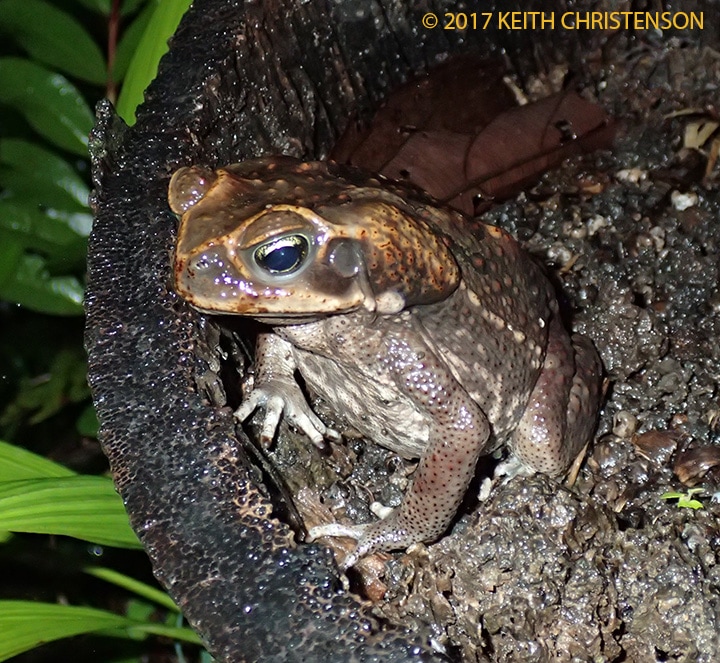
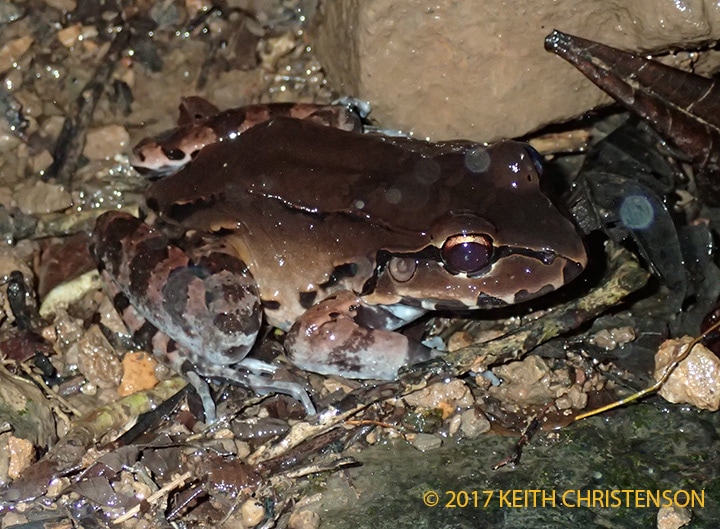
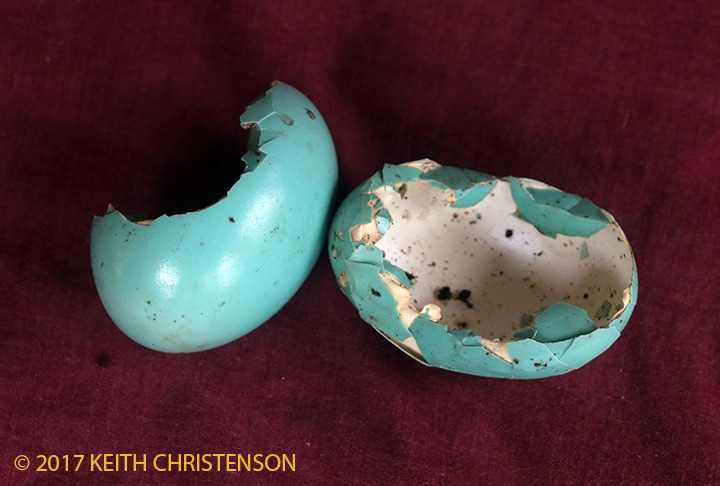

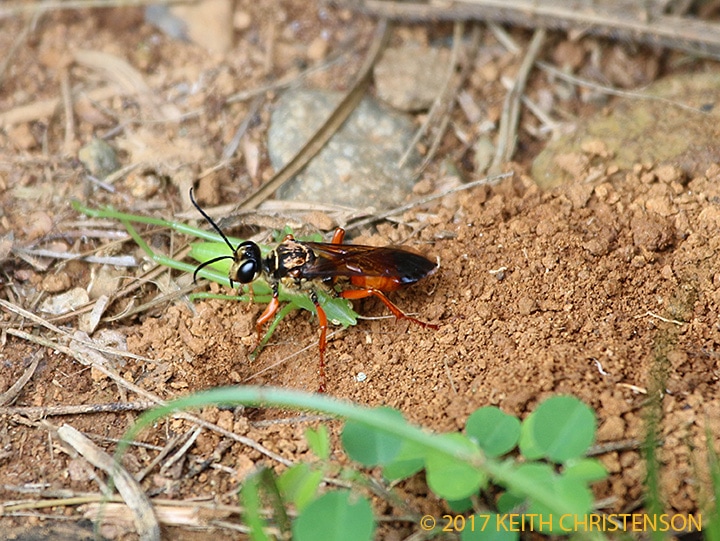
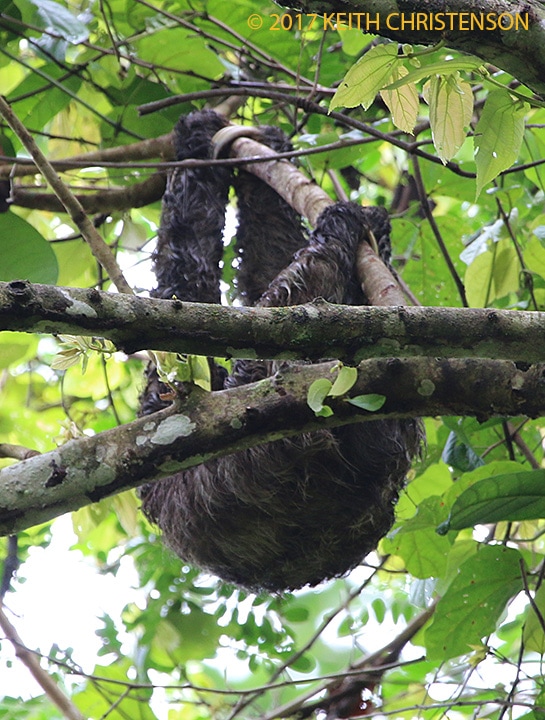
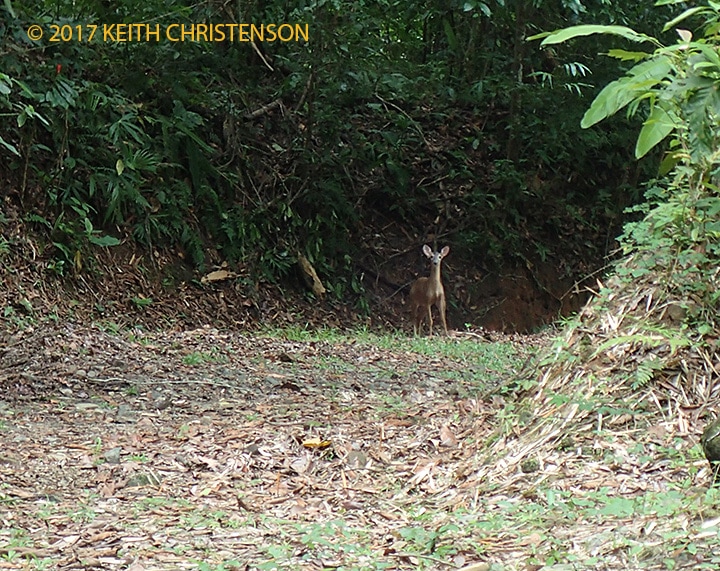
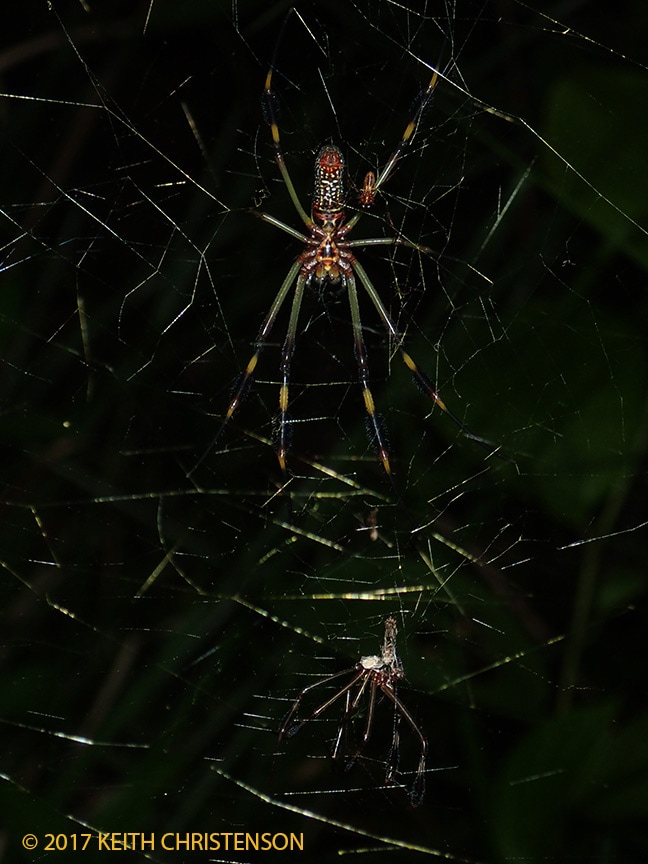
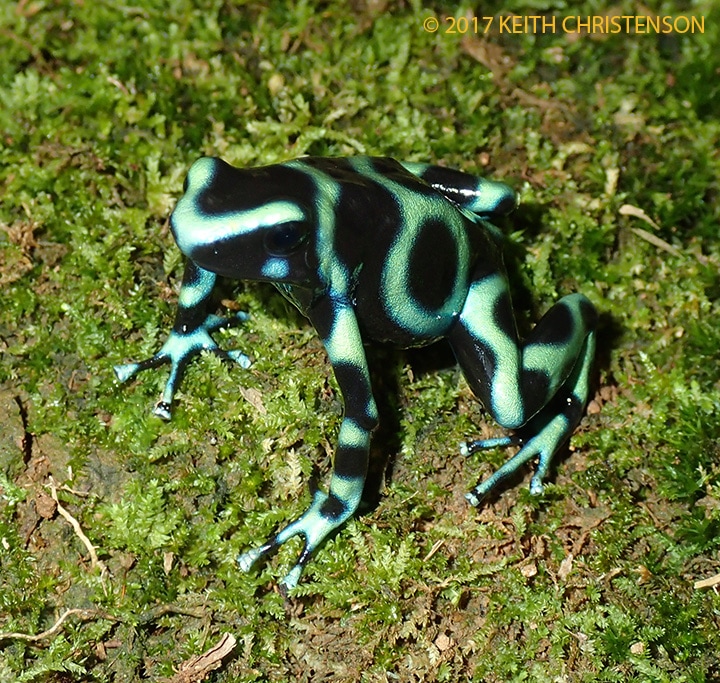
 RSS Feed
RSS Feed